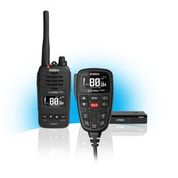Deliverect, the European scale-up, is helping restaurants streamline orders from third-party food delivery and online ordering services. Deliverect has its arrival in Australia with the appointment of Jeremy Van Dille as the company’s General Manager for Australia and New Zealand, who will be based in Sydney.
Deliverect, which provides a software platform that connects restaurant POS and kitchens with delivery services, already has 1,500 Australian food service locations as customers. That includes Outback Steakhouse, Red Rooster, Hungry Jacks, Fishbowl and Pretzel restaurants, and food delivery partners such as Uber Eats, Doordash, Menulog and Deliveroo. With the addition of a dedicated Australian team that plans to grow to 50 during 2022, the company plans to substantially expand its footprint across the local restaurant industry.
“Moving in and out of COVID lockdowns has fundamentally changed the way people eat and drink and restaurants have had to pivot as demand for food delivery services reaches new heights,” said incoming Deliverect ANZ General Manager, Jeremy Van Dille.
“There are currently about 65,000 restaurant locations doing food delivery across the country. Most have adapted during the pandemic to cater to existing patrons and reach new clientele. These restaurants have come to us because the complexities of dealing with numerous delivery partners complicate managing online sales channels. For family-owned restaurants, large chains and FMCG brands, the priority is to make sure patrons receive the best quality food in the quickest amount of time. They are eager to ensure an operational flow that minimises hiccups that affect customer experience. We are giving them a simple way to manage and grow online orders with ease. Our challenge is to ramp up Deliverect’s Australian operation quickly to meet this demand.”
A subscription-based SaaS solution, Deliverect integrates directly with restaurants’ POS systems, automating the inbound online order flow through a single point. This eliminates the need for staff to monitor multiple devices and manually re-enter orders into their existing system, dramatically reducing staff workload and the probability of errors. When a delivery or takeout order comes in from an Uber Eats, Doordash, Menulog or Deliveroo, Deliverect intercepts the order, processes it, then transfers it straight to the kitchen. Globally, Deliverect processes 1.5 million orders each week, supporting 100+ integrations with major POS and delivery partners, with hundreds of others in the pipeline.
Outback Steakhouse has locations across NSW and Queensland and has been using Deliverect for more than a year. According to Christopher Noble, the restaurant chain’s Group Chief Marketing Officer, “Our partnership with Deliverect has been a game-changer in streamlining our delivery processes and has enabled us to spend more time focusing on our guests’ experience. In an ever-changing world, Deliverect has been key in helping us stay at the cutting edge of technology.”
“Building on our success in Europe, this year’s expansion into new markets like Australia, the United Arab Emirates and Mexico marks a major milestone for Deliverect. Since our first days, we’ve worked hard to create a strong ecosystem of foodservice customers, POS and delivery partners, and we look forward to building new relationships in Australia,” said Deliverect CEO Zhong Xu.
“Australia has a very sophisticated food industry, particularly when we look at the uptake of QR code menus and ordering in restaurants. We expect the convenience and efficiency of online food ordering mean consumer demand will continue to flourish, and our goal is to be the partner who helps the foodservice industry continue to connect, innovate and evolve through technology.”
